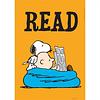Take a photo of a barcode or cover
challenging
informative
This was extremely informative, and I should have read it sooner. More info and developments have come out about the opioid epidemic since this book was published in 2015, but this book itself won't ever really be dated, because what he did here was to investigate its origins. No matter what happens down the road, this will always be how it started. (I've heard that Empire of Pain is a good follow up, but I don't know if I have the emotional fortitude to tackle it anytime soon.)
Quinones tracks how various circumstances and choices collided in both the medical world and the drug world to make the perfect Venn diagram of how to make lots of people addicted to and die from opioid overdoses. It's a lot to get into, obviously, because there's a whole book about it, so I'm not even going to try. But Quinones lays it out very clearly, with lots of short chapters for easy digestion. He covers the medical thinking behind using opioids to treat pain, the emergence of predatory pain clinics, how a single out of context letter to a medical journal (not even a study) changed how doctors prescribed these drugs for years after, and how essentially a small town in Mexico spread the sale of black tar heroin throughout the United States, even to Hawaii. It's medical nonfiction, true crime, and human interest all in one, an d it's a really nice piece of investigative journalism. It's also extremely disheartening.
Highly recommended if you are looking for a good place to learn about this topic.
Read Harder Challenge 2021: Read a work of investigative nonfiction by an author of color.
Quinones tracks how various circumstances and choices collided in both the medical world and the drug world to make the perfect Venn diagram of how to make lots of people addicted to and die from opioid overdoses. It's a lot to get into, obviously, because there's a whole book about it, so I'm not even going to try. But Quinones lays it out very clearly, with lots of short chapters for easy digestion. He covers the medical thinking behind using opioids to treat pain, the emergence of predatory pain clinics, how a single out of context letter to a medical journal (not even a study) changed how doctors prescribed these drugs for years after, and how essentially a small town in Mexico spread the sale of black tar heroin throughout the United States, even to Hawaii. It's medical nonfiction, true crime, and human interest all in one, an d it's a really nice piece of investigative journalism. It's also extremely disheartening.
Highly recommended if you are looking for a good place to learn about this topic.
Read Harder Challenge 2021: Read a work of investigative nonfiction by an author of color.
informative
fast-paced
Somehow I checked the young adult adaptation out of the library, so it feels a little unfair writing such a harsh review based on an abridged version of the book. That said, I just wasn’t impressed.
The book basically boils down to: Purdue Pharma irresponsibly markets pain pills, kids get addicted, when they’re broke they turn to heroin, the community eventually pays attention because the kids are white.
Not exactly anything revolutionary there. There are some interesting details about the Mexicans selling the heroin (small amounts of drugs, avoiding guns/violence to ensure lesser sentences), but other than that the details were frankly kind of boring. We’re told about all these good kids ruined by addiction, but they’re all described so blandly it’s hard to feel a connection. Again, maybe something got lost in the translation, but this one was totally forgettable.
The book basically boils down to: Purdue Pharma irresponsibly markets pain pills, kids get addicted, when they’re broke they turn to heroin, the community eventually pays attention because the kids are white.
Not exactly anything revolutionary there. There are some interesting details about the Mexicans selling the heroin (small amounts of drugs, avoiding guns/violence to ensure lesser sentences), but other than that the details were frankly kind of boring. We’re told about all these good kids ruined by addiction, but they’re all described so blandly it’s hard to feel a connection. Again, maybe something got lost in the translation, but this one was totally forgettable.
While a bit dated (published in 2015), this book chronicles the rise of doctor-prescribed opiate addiction turned heroin addiction that ravaged across the USA in the early twenty first century and continues to this day. It is thorough, heavy, and unflinching, featuring a narrative style that jumps unceremoniously between dealers, DEA agents, addicts, police officers, parents… all roles in the crisis are represented.
It would definitely be reductive to call the book a cautionary tale, but it does leave me with two primary thoughts: 1, anything in the world of medicine (and many other fields) that seems like a silver bullet, a miracle pill, too good to be true… probably is too good to be true, and deserves suspicion and thorough research, even and especially if we want to believe in it. 2, an experience of community and a sense of purpose are substantial protections from a myriad of ills, including addiction, and a lack of those things stands as a substantial risk factor.
This is obviously not a light read. As a chronic book non-finisher, I considered stopping about halfway through, as Dreamland is dense and at times feels repetitive. I’m so glad I kept going, though, as I now feel I have a decent understanding of a monumental source of pain in thousands of Americans’ daily lives, as well as an understanding of the roots of criminal justice reforms and public policies still being discussed today.
It would definitely be reductive to call the book a cautionary tale, but it does leave me with two primary thoughts: 1, anything in the world of medicine (and many other fields) that seems like a silver bullet, a miracle pill, too good to be true… probably is too good to be true, and deserves suspicion and thorough research, even and especially if we want to believe in it. 2, an experience of community and a sense of purpose are substantial protections from a myriad of ills, including addiction, and a lack of those things stands as a substantial risk factor.
This is obviously not a light read. As a chronic book non-finisher, I considered stopping about halfway through, as Dreamland is dense and at times feels repetitive. I’m so glad I kept going, though, as I now feel I have a decent understanding of a monumental source of pain in thousands of Americans’ daily lives, as well as an understanding of the roots of criminal justice reforms and public policies still being discussed today.
dark
emotional
informative
sad
Dreamland focuses on the distribution of heroin in small communities--where it comes from, how addiction spreads, how law enforcement plays whack-a-mole with a revolving door of dealers. Fascinating and well-researched.
challenging
dark
emotional
informative
reflective
sad
tense
medium-paced
If you work in the American health professions, please read this book. It's raw and horrifying but has some hope at the end for the future and will tell you things that most professional programs are not teaching about the modern history of opiates in America.
Very interesting book, but a bit hard to follow. The chapters don’t have a chronological or thematic organization. The author’s commentary can also be a bit repetitive from chapter to chapter.



